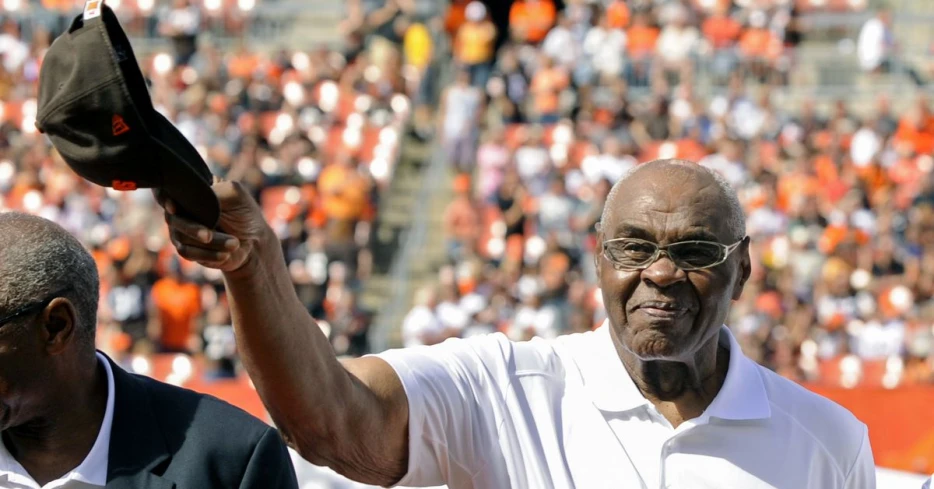
 Dawgs By Nature
Dawgs By Nature
25 questions with Jim Brown’s roommate who had a great career on his own
The first day of January is a day to reflect. New Year’s resolutions are made in order to change bad habits and improve a person’s life for the better.
New Year’s Day has in the past been the date designated for the game of college football to crown its season’s national champions by the various bowl games played on this one day. This has changed somewhat since the various playoff systems have been installed.
Other minor bowl games are played in the final days of December such as the Peach Bowl, the Bluebonnet Bowl, or the Liberty Bowl. Of course, the majority of bowl games now have corporate names such as the Hyundai Sun Bowl or the TaxSlayer.com Gator Bowl.
RELATED: CHANGING PRO FOOTBALL’S COLOR BARRIER
But the major bowl games traditionally have been played on New Year’s Day. Usually, the top-ranked teams are involved in these competitions on this one special day, and as these contests end, a national champion is crowned.
Many sports fans watched games on January 1, 1956, but few understood the day’s significance. It is a historic day. No, flying cars weren’t revealed, or the United States didn’t win yet another war. It was a day that civil rights in this country took a huge step forward.
Back in 1956, there were few black athletes on professional sports teams. There were even fewer in the college ranks.
The Cleveland Browns of the AAFC and the Los Angeles Rams of the NFL had re-integrated professional football by hiring two black players on each team in 1946. Major League Baseball’s Brooklyn Dodgers introduced Jackie Robinson in 1947 which broke that sport’s color barrier. In 1950, Earl Lloyd became the first black player to play in an actual game in the NBA with the Washington Capitals. Canadian-born Willie O’Ree was signed by the Boston Bruins as the NHL’s first black athlete in 1958.
However, on January 1, 1956 (following the 1955 college football season) all four of the major bowl games in college football had a black player on their roster who played. All on the same day. It had never happened before. Black athletes had been competing in major bowls before, but on this day, the Cotton Bowl, Rose Bowl, Orange Bowl, and the Sugar Bowl, all had a black man play in front of a national audience.
In one of those games, the Orange Bowl, Colorado defeated Clemson 27-21. That game’s black athlete was Colorado offensive guard John Wooten. A black man playing along the offensive line was a very rare find in those days. Most black football players at the time were skill-position guys like running back, receiver, or in the defensive backfield.
Fast forward to 2024, and black athletes are the norm: NFL - 53.5%, NBA – 70.4%, MLB – 6%, NHL – 5%, MLS – 25%, and NLL – 8.9%.
But in the mid-1950s, black athletes were still regulated...